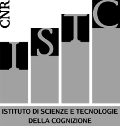Giraff+ Combining social interaction and long term monitoring for promoting independent living
See a GiraffPlus press release issued by the European Commission in this ISTC news.
Early detection and adaptive support to changing individual needs related to ageing is an important challenge in today society. The Giraff+ project aims at developing a system that addresses such a challenge. The system consists of a network of home sensors that measure e.g. blood pressure or temperature, or detect e.g. whether somebody occupies a chair, falls down or moves inside a room. The data from these sensors are interpreted by an intelligent system in terms of activities, e.g. the person is going to bed, and health and wellbeing, e.g. the person is tired or well rested. These activities can then trigger alarms or reminders to the person or his/her caregivers, or be analysed over time by a health professional. The system should automatically adapt to perform specific services such as checking the person’s sleeping patterns. There is also a telepresence robot, the Giraff, which can be moved around in the home by somebody connected to it over internet, e.g. a caregiver. The Giraff is effectively a mobile communication platform, equipped with video camera and display, and microphone and speakers, and it helps the user to maintain his/her social contacts. Particular emphasis is put on user evaluation outside the laboratories. The Giraff+ system will be installed and evaluated in at least 15 homes of elderly people distributed in three European countries (Sweden, Italy and Spain). These evaluations will drive the development of the system. The concept of “useworthiness” will be central in order to assure that the Giraff+ system provides services that are easy and worth using. In addition, by using existing and affordable components (besides the Giraff robot also sensors from two participating companies: Tunstall and IntelliCare) we strive to achieve a system that is affordable and close to commercialization.
CNR takes part in Giraff+ with two research groups having distinct competences one at ISTC and one at ISTI.
ISTC covers various roles in the project: Gabriella Cortellessa is the Project Technical Manager, Andrea Orlandini coordinates WP1 on User Requirement Analisys and Architectural Design, Amedeo Cesta coordinates WP4 on Interactive Capabilities and Personalization Services.

